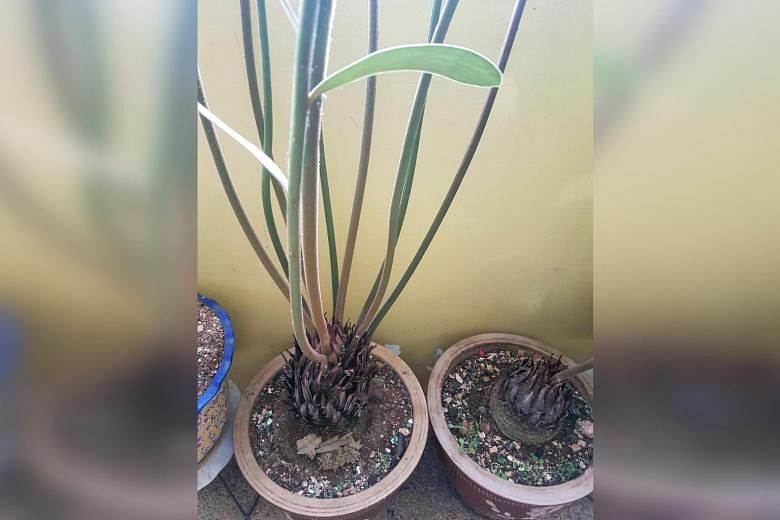Plants may be Sago Palms
I have had these plants for more than 10 years. One has many stems, while the other has only one stem with slightly bigger leaves. What type of plants are they?
Chua Joon Yong
Your plants are probably cycads, a large group of prehistoric plants. They have a trunk with a crown of stiff, pinnate leaves, making them look like palm plants.
In Singapore, the most common species is the Sago Palm (Cycas revoluta). Its fronds are often harvested for Palm Sunday and young leaves are eaten by the caterpillars of the Cycad Blue Butterfly.
The Sago Palm plant needs good light to grow well. If you live in an apartment, the plant will need at least six hours of direct sunlight a day. Position them higher on the parapet or the lack of light may cause them to decline.
Also, the soil used to grow your plants needs to be kept moist and well-drained. The soil in the picture looks dry. Check if the roots have filled the pot and if they have, move the plants into a larger pot.
Buddhist Pine can grow into a tree
Can you tell me this plant's name and characteristics?
Victor Chua
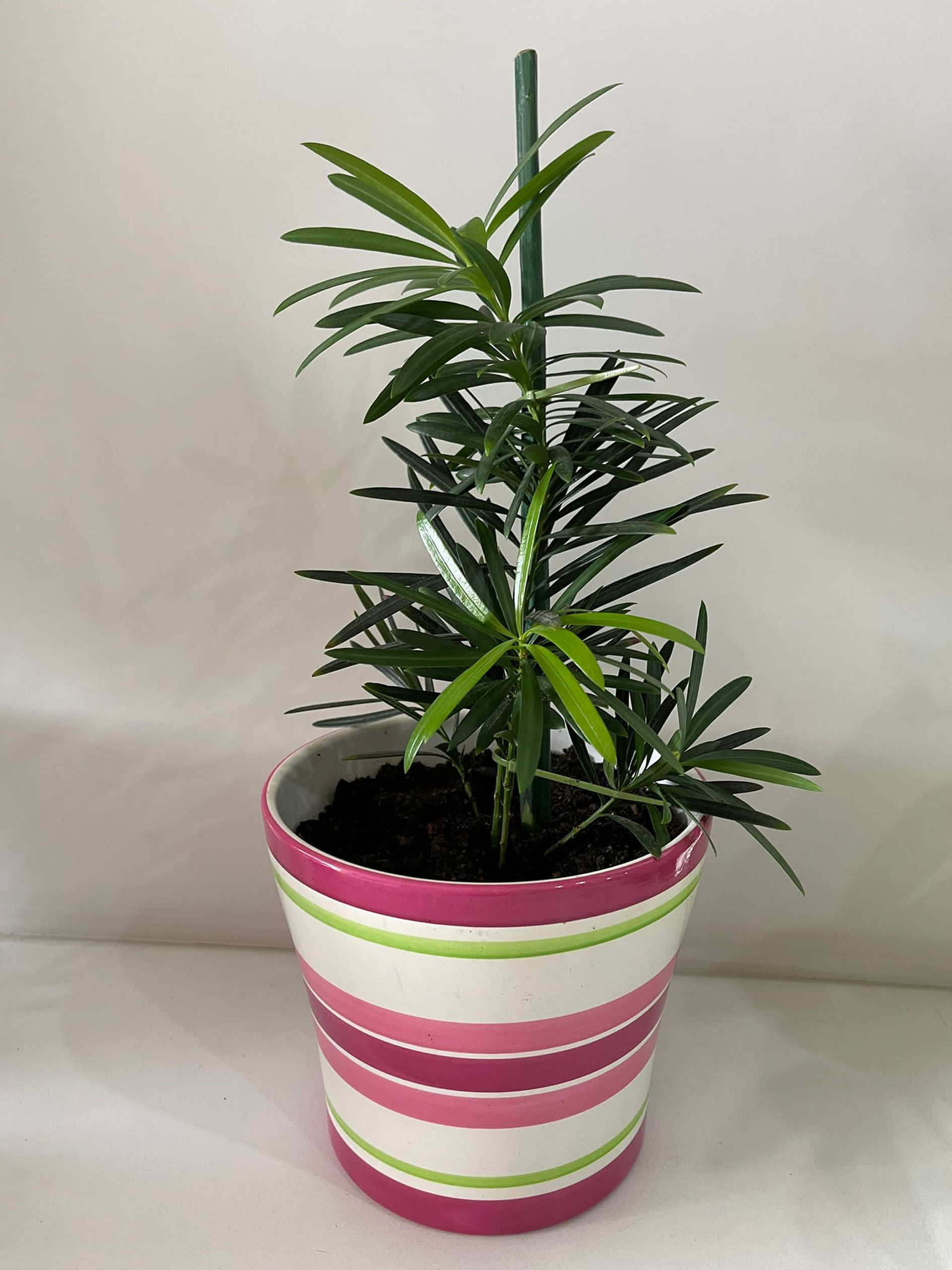
Your plant appears to be the Buddhist Pine (Podocarpus macrophyllus), which is also known by a number of common names - Big-leaved Podocarp, Japanese Yew and Big-leaved Podocarpus.
This plant can grow into a large tree if planted in the ground outdoors. It can be pruned to be grown as a shrub or as a bonsai candidate. For optimal growth, it needs to be placed in a spot where it can get at least six hours of direct sunlight a day.
Kelat oil is commonly planted as a hedge
The fruit of my plant looks exactly like small blueberries. The plant is commonly used to line the fences of landed property. Birds that eat the fruit leave black droppings that stain the floor. During fruiting season, there are black patches all over the place. Are the plant's "blueberries" edible?
Gordon Cai
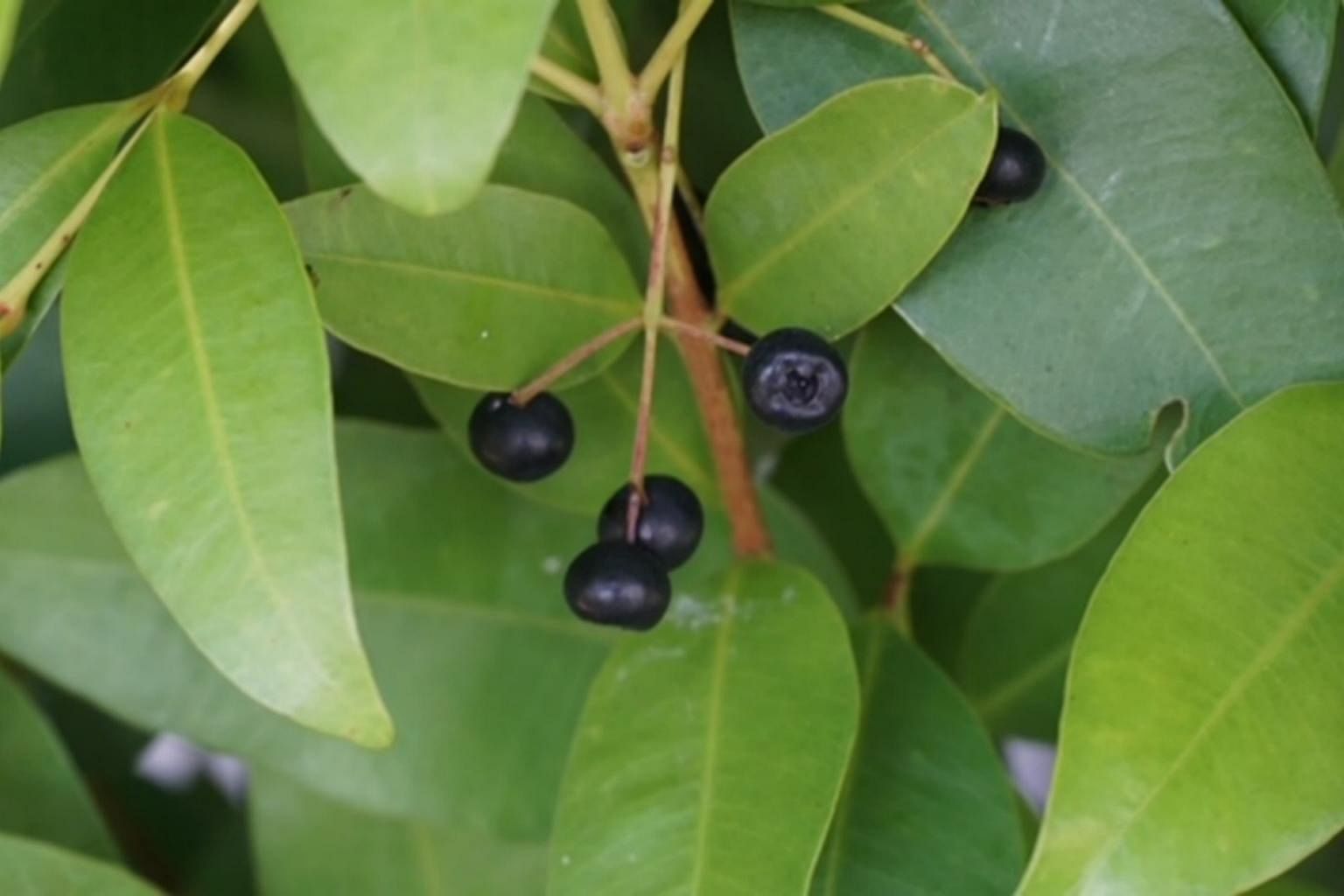
The fruit pictured is likely produced by a native tree (Syzygium myrtifolium), which is known by common names such as Kelat Oil, Kelat Paya and Red Lip.
You will find this tree in the parks, gardens and streets of Singapore, usually planted closely together to form a hedge for screening purposes.
The fruit is probably not palatable and is mostly eaten by birds. Note that several Syzygium species produce fruit, such as the jambu, that humans can eat.
Sesame plant produces edible seeds
What is this plant growing in my pot? The flowers are white and the fruit looks strange. Is the fruit edible? The pot is placed outside my window, which receives morning sun.
Lee Lay Choon
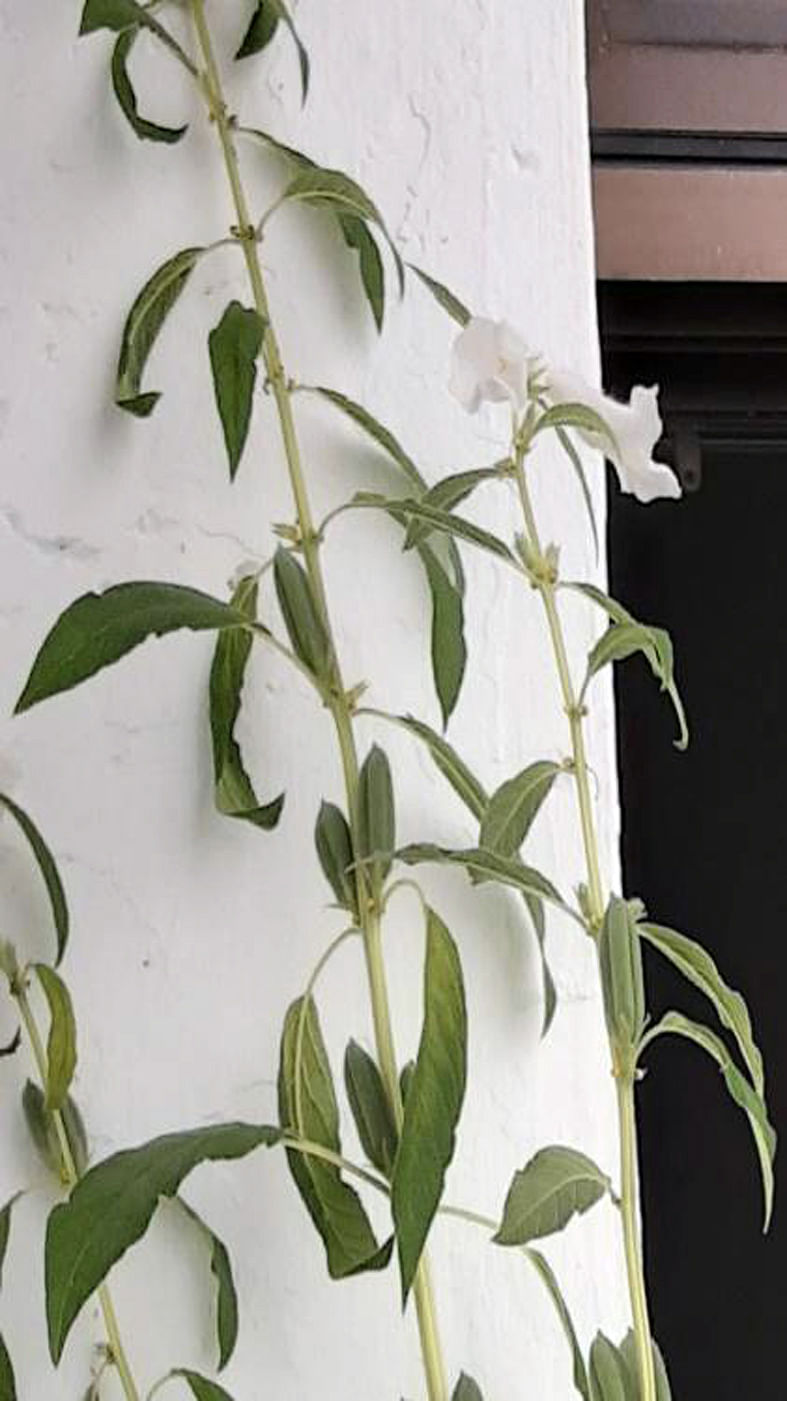
The plant you have is the Sesame plant (Sesamum indicum). Sesame seeds can be found in the mature, dry pods formed between the leaf axils. They split open when mature, so harvest them to collect the seeds.
The plant is an annual, meaning it declines after flowering and fruiting. There is another species that is also commonly grown in Singapore, Sesamum radiatum, which produces pink flowers and black seeds.
Flame Violet is a foliage plant grown as a ground cover
My mother grew this plant, so I took the stock and root to put in my smallest flower pot. It withered after a few days. Does this plant need light? What type of soil should I use?
Chan Chung Wah
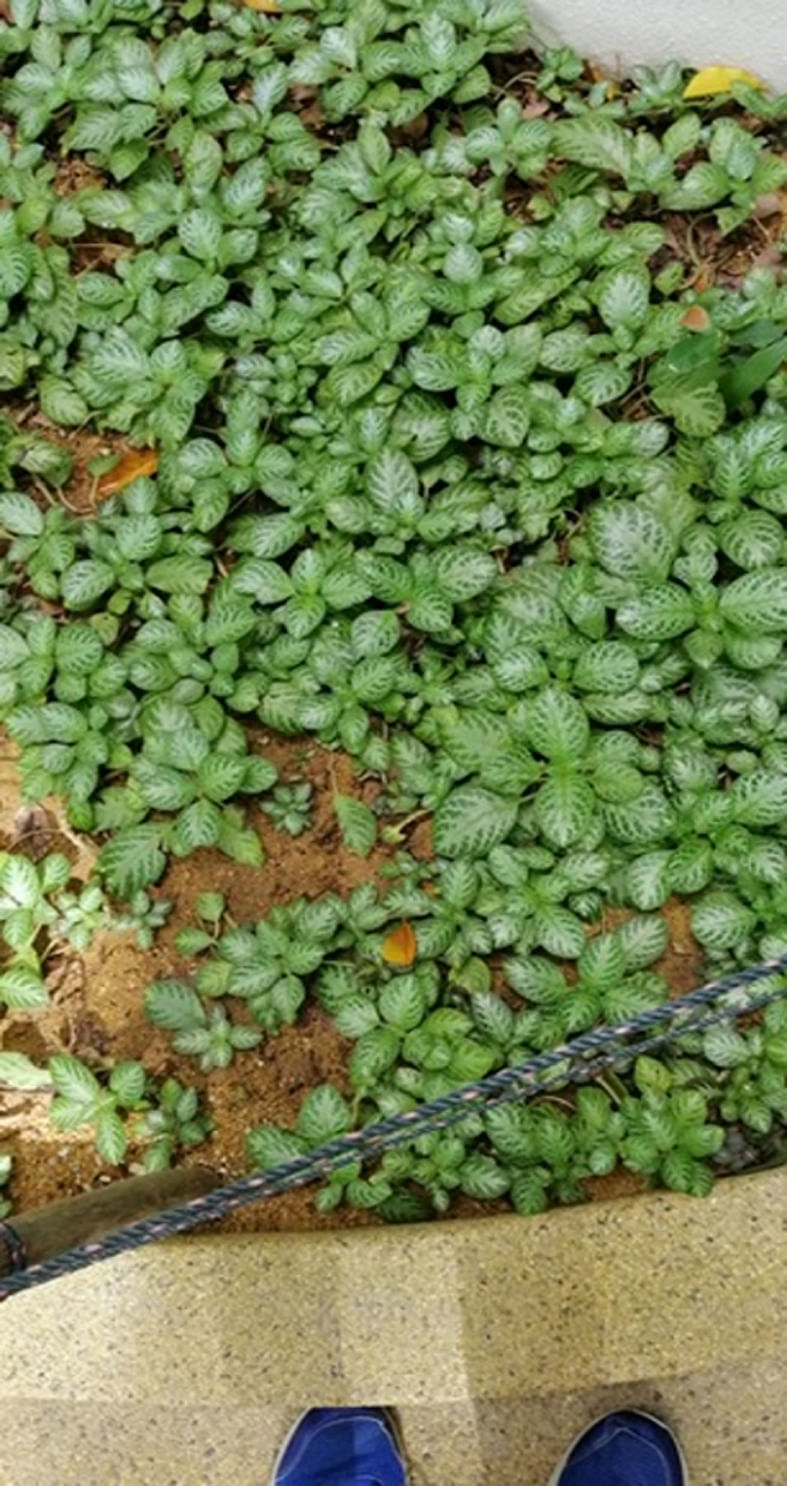
The plant is the Flame Violet (Episcia cupreata). There are many cultivars commonly grown in Singapore which differ in leaf shape, size, colour and flowers.
The Flame Violet can be propagated via stem cuttings or rooting the stolons. They must be planted in an aerated but moisture-retentive potting mix, such as one with equal parts of peat moss, perlite and vermiculite.
They do not fare well in heavy soil-based potting media, which causes them to rot. You may need to cover newly propagated plants with a clear plastic cup to conserve moisture and prevent wilting.
As these plants grow, they will spread by sending out stolons, which tend to grow better on constantly moist surfaces like volcanic rocks rather than in heavy, clay-like soil. Your plant will fare best under filtered sunlight.
- Answers by Dr Wilson Wong, an NParks-certified practising horticulturist, parks manager and ISA-certified arborist. He is the founder of Green Culture Singapore and an adjunct assistant professor (Food Science & Technology) at the National University of Singapore.
- Have a gardening query? E-mail it with clear, high-resolution pictures of at least 1MB, if any, and your full name to stlife@sph.com.sg. We reserve the right to edit and reject questions.
